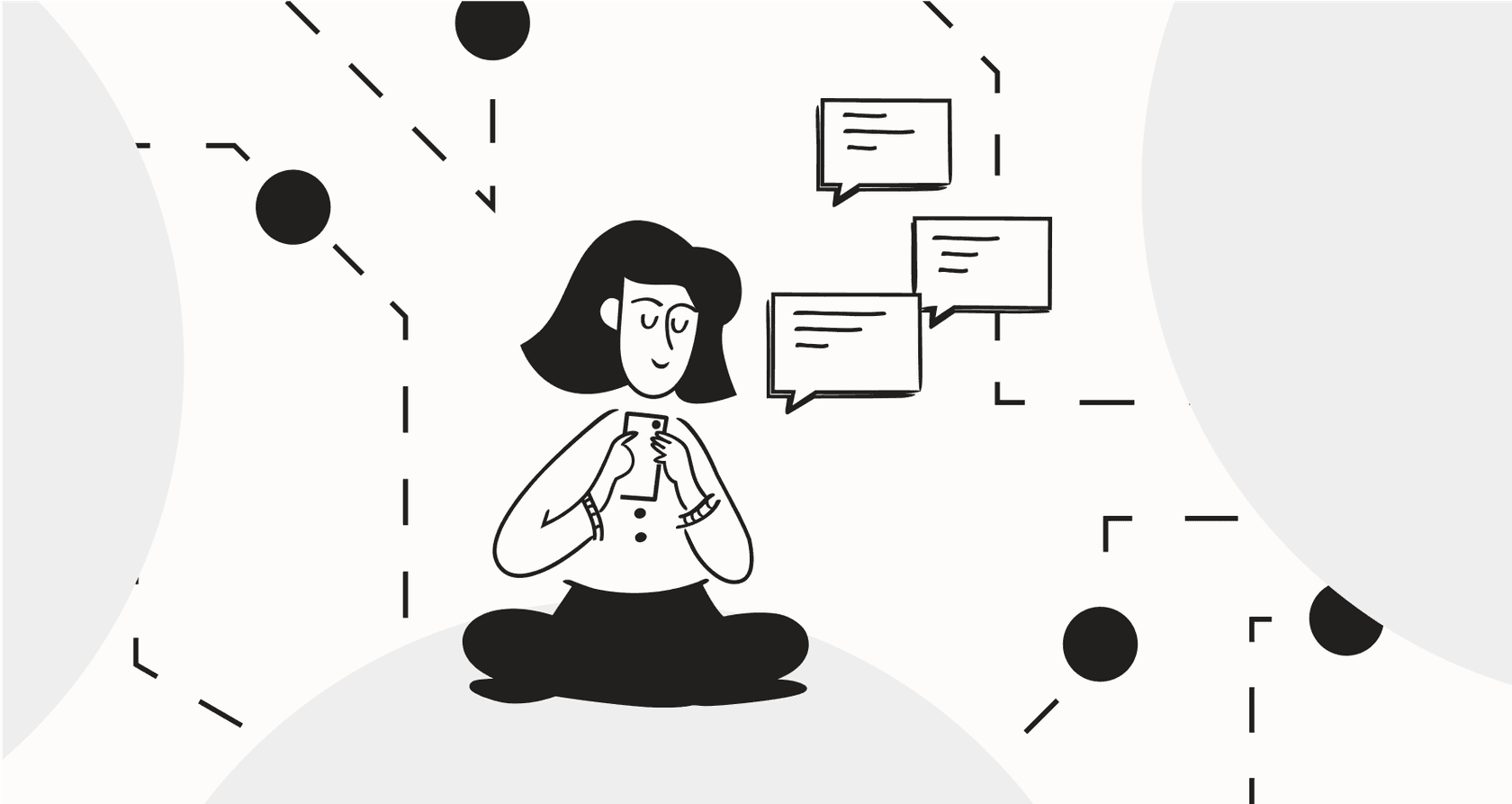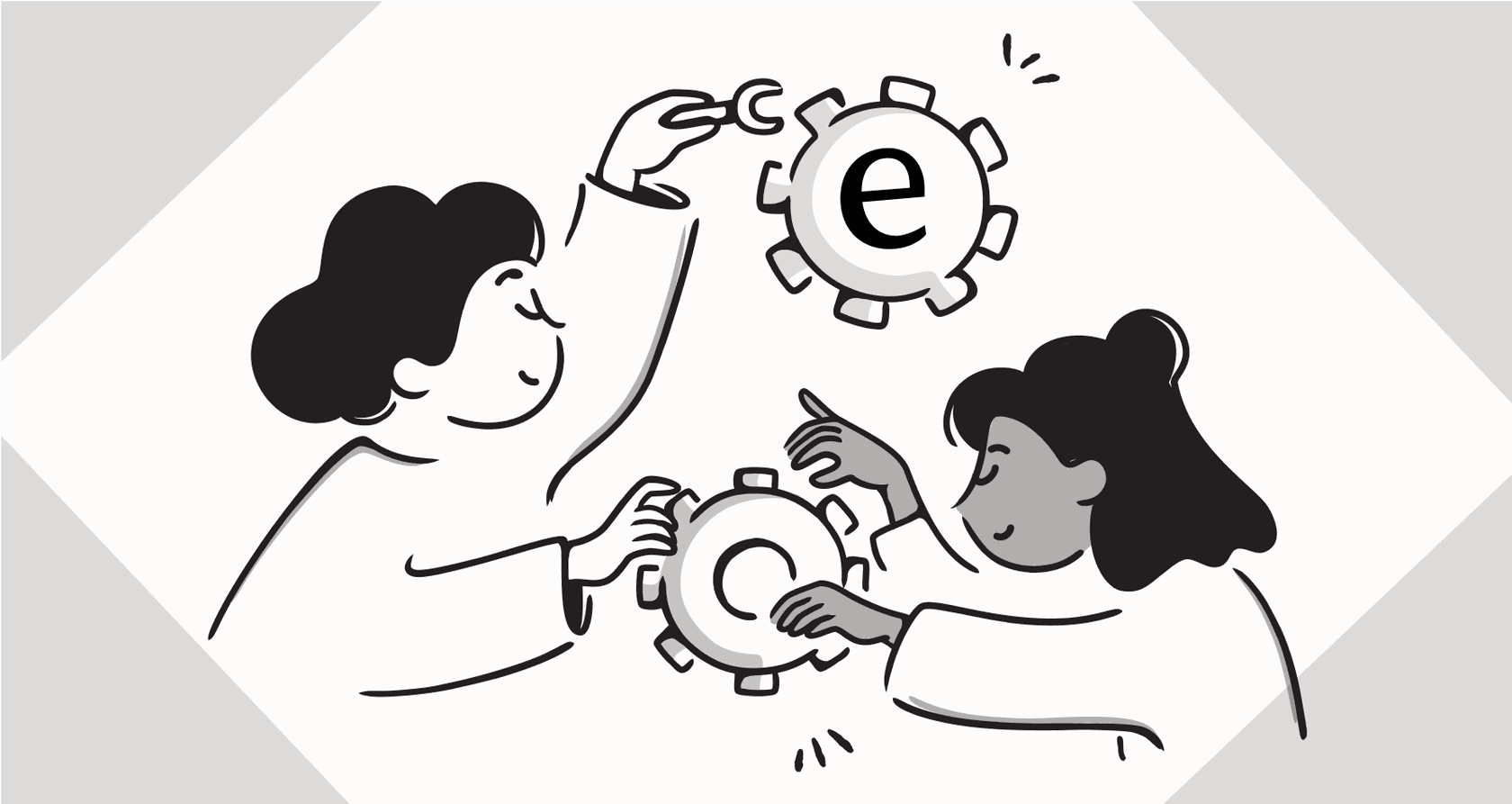
AI is seriously changing how customer support works these days, and platforms like Zoho Desk are right there with it. Remember when AI in support just meant a basic chatbot? Those days are pretty much gone. Today, it's all about smart automation, really understanding how customers feel, and giving support teams the tools to work faster and smarter.
Adding artificial intelligence to your Zoho Desk setup can really help you handle all those incoming questions, give quicker answers, and free up your team to tackle the trickier stuff. But with so many tools out there, how do you figure out which ones actually make your Zoho Desk experience better?
This post is going to dive into some of the top AI-powered tools and integrations that can connect with or just work well alongside your Zoho Desk helpdesk. They're designed to help you smooth out workflows and get things done more efficiently. We'll chat about what makes an integration a good fit and then highlight eight options worth checking out.

Zoho Desk dashboard interface.
Before we get into the list, let's quickly cover what's really important when you're picking an AI tool to team up with your helpdesk.
What to look for in a Zoho desk AI integration
Choosing the right AI integration for Zoho Desk isn't just about adding another gadget; it's about finding something that genuinely makes your work easier and your customers happier. Look for things like:
- Automatically understanding and sorting incoming tickets
- Giving instant answers to common questions
- Helping your support team whip up better replies faster
Making sure it connects smoothly is super important. The tool should ideally play nice with Zoho Desk and any other apps you use. Think about:
- How easy it is to set up
- If it can grow with your business (scalability)
- If the price makes sense for how much you'll use it and the size of your team
The main goal is to find solutions that cut down on manual tasks, offer helpful insights, and just make your support operations run better overall.
Now, Zoho Desk does have its own AI features built-in with Zia, but sometimes you might need capabilities that go a bit deeper or are more flexible. For example, an advanced AI platform like eesel AI offers really customizable AI Agents and AI Assistants. These can learn from a wider range of sources, like past tickets, internal documents, and over 100 other integrations. This makes it a powerful option, either on its own or working alongside your helpdesk's native AI. eesel AI's focus on affordable, interaction-based pricing and solid testing features helps get around some common issues you might find with other AI solutions.
8 best AI integrations for Zoho desk
Giving your Zoho Desk platform a boost means connecting it with tools that add powerful features, automate tasks, and help tidy up your support operations. Here are seven integrations and tools that can work with Zoho Desk to bring more AI and automation into your daily routine.
1. Zoho Flow
Think of Zoho Flow as a bridge that connects Zoho Desk to hundreds of other applications so they can talk to each other. It's not an AI tool itself, but it's crucial for setting up automated workflows that kick off based on things happening in Zoho Desk. These workflows can then involve AI actions in other apps you've connected. For instance, you could use Zoho Flow to automatically create a ticket in Zoho Desk when something specific occurs in another system, or maybe send a heads-up to a team chat if Zia spots a ticket with unhappy customer sentiment.

Zoho Flow visual workflow builder.
- Pros:
- Lets you build complex, multi-step automations that jump between different platforms.
- Has a visual builder that makes creating custom workflows pretty straightforward.
- Cons:
- Doesn't have its own AI features; it relies on the AI capabilities of the apps you connect it to.
- You'll need to set up and manage these workflows separately outside of Zoho Desk
- Pricing: Usually based on how many tasks the system performs for you each month. You can find more details on the Zoho Flow pricing page.
- Integration Method: It's a native Zoho integration, so it fits right in.
- Best For: Automating processes that involve several steps and connecting Zoho Desk to apps that aren't part of the Zoho family.
2. Zoho Desk's AI (Zia)
Zoho Desk actually comes with its own built-in AI sidekick called Zia. Zia offers features specifically designed to automate key helpdesk jobs right within the platform. This includes smart ticket routing based on what the ticket says, analyzing how customers are feeling to help you figure out which issues are urgent, suggesting helpful articles or replies (that's the Reply Assistant), and giving you insights into your knowledge base to spot missing info. Zoho has even added ChatGPT features to Zia for things like summarizing tickets or helping draft responses.

Zia's sentiment analysis on a ticket.
- Pros:
- It's baked right into the Zoho Desk interface, so it feels natural to use.
- Automates basic helpdesk tasks like routing tickets and checking sentiment.
- Uses the knowledge base you've already built in Zoho Desk.
- Cons:
- Some of the more advanced AI features might only be available on higher-level Zoho Desk plans or cost extra, kind of like how other helpdesks handle premium AI add-ons.
- You might not have as much flexibility to customize how the AI behaves or sounds compared to dedicated AI platforms.
- The AI mainly learns from data inside Zoho Desk, especially the knowledge base. This might not include all the context you need from other internal documents or past customer chats.
- Pricing: Basic AI stuff is included with your Zoho Desk plan, but it's a good idea to check your specific plan details for what advanced features you get.
- Integration Method: It's part of Zoho Desk itself.
- Best For: Using the core AI features that live right inside your Zoho Desk account.
3. eesel AI
eesel AI is a third-party AI platform that works with major helpdesks like Zendesk, Intercom, and Freshdesk. While it doesn’t yet have a native Zoho Desk integration, you can connect it using Zoho Flow or API workarounds to bring in powerful automation.
What makes eesel AI stand out is its ability to learn from more than just your help center. It can train on past tickets, internal documents, SOPs, and even platforms like Google Drive or Confluence. This makes it easier to generate helpful replies, tag tickets correctly, and automate more complex workflows. You can also test everything before going live, roll out AI in phases, and see where it’s working or needs adjustment.

eesel AI's customization and bot options.
Pros:
- Learns from a wide range of content including past tickets and internal documents
- Offers controlled testing and phased rollouts
- More flexible and cost-effective than many native helpdesk AI tools
Cons:
- No native Zoho Desk plug-in yet
- Requires setup through Zoho Flow or custom configuration
Pricing: Based on usage per interaction, not per seat
Integration Method: Connects via automation tools like Zoho Flow or API
Best For: Teams that want more flexibility and smarter AI trained on real company knowledge
4. CoPilot AI (via Albato)
If you’re using Zoho Desk and looking to bring in smarter, more personalized automation, CoPilot AI might be worth exploring—especially when connected through Albato, a no-code automation platform. Albato helps you link apps together without writing code, so you can plug CoPilot AI into Zoho Desk and create powerful workflows with just a few clicks.
For example, you could trigger CoPilot to generate a reply when a certain type of ticket comes in or automatically update Zoho Desk when a lead replies in another platform. Everything runs in the background, and you control the flow from Albato’s visual editor.

Albato's CoPilot to Zoho Desk automation.
Pros:
- You can build automations across multiple platforms, not just Zoho
- No coding needed, so your team can set it up quickly
- Lets you trigger AI-generated actions like responses, updates, or ticket routing
Cons:
- CoPilot AI is not built into Zoho Desk, so everything runs through Albato
- You’ll need to plan workflows carefully to avoid sending duplicate actions
Pricing: Albato has a free trial. Paid plans depend on how many automations you run each month.
Integration Method: No-code automation via Albato
Best For: Teams who want to bring CoPilot’s smart AI replies and routing into Zoho Desk without rebuilding their setup
5. Zapier + AI by Zapier or OpenAI or AI Number
Zapier already makes it easy to connect Zoho Desk with the rest of your workflow. By adding AI tools like AI by Zapier, OpenAI, or AI Number into the mix, you can take those automations further. Whether you want to summarize tickets, pull out key details, or auto-tag conversations, it all happens without writing any code.
You can build a flow where a new ticket in Zoho Desk gets sent to OpenAI to create a quick summary or a draft reply. Or use AI Number to extract specific fields, like names or product types, and plug them into your custom ticket fields. Zapier handles the logic through its visual builder, so setup is fast and flexible.

Zapier AI sending an automated ticket to Zoho Desk.
Pros:
- Easy to set up using Zapier’s visual interface
- Works with multiple AI providers including OpenAI and AI Number
- Helps your existing workflows feel smarter without switching platforms
Cons:
- AI steps count toward your monthly task limit on paid plans
- Prompts may need adjusting to keep replies accurate and on-brand
Pricing: Free plan available, but AI tasks usually fall under paid tiers
Integration method: Built inside Zapier using app connections
Best for: Teams that want smarter workflows, like ticket summaries or tagging, using tools they already rely on
6. Voiceflow
If you want to bring conversational support into your Zoho Desk setup, Voiceflow is a flexible tool to explore. It lets you build AI chatbots and voice agents that can talk to customers, collect information, and send that data straight into Zoho Desk. You can guide users through steps, answer basic questions, and create or update tickets in the background.
Everything runs through Voiceflow’s drag-and-drop builder, so you can design custom flows without needing to write code. The bots can live on your website, in your mobile app, or even on voice platforms like Alexa or Google Assistant.

Voiceflow AI integrated with Zoho Desk.
Pros:
- Easy to create conversational flows with no coding
- Lets you capture and send customer data into Zoho Desk automatically
- Supports both chat and voice interactions
Cons:
- You’ll need to build and maintain the flows separately from your helpdesk
- Some training is needed to make sure the bot handles conversations smoothly
Pricing: Free plan available with paid plans based on usage and features
Integration method: Connects using Voiceflow’s Zoho Desk API support or webhooks
Best for: Teams that want to handle common questions through a smart chatbot and pass the rest to Zoho Desk automatically
7. Workativ Assistant
Workativ Assistant brings conversational AI directly into tools like Slack and Microsoft Teams, making it easier for users to interact with Zoho Desk through everyday chat. With no coding needed, you can build chatbots that help people create, update, check, or even delete tickets—without ever leaving their messaging app.
Whether it's employees requesting IT support or team members checking the status of a ticket, everything happens inside chat. It keeps the experience simple, efficient, and right where your team already works.

Workativ Assistant setup.
Pros:
- Easy to set up using visual tools
- Works natively in Slack or Microsoft Teams
- Handles ticket creation, updates, lookups, and deletions in real time
Cons:
- Focused on internal chat use, not for website visitors
- Each use case needs its own configured workflow
Pricing: Free trial available, with paid plans based on usage
Integration method: Native chatbot connection to Zoho Desk through Workativ
Best for: Teams that want ticket automation built into Slack or Teams without using a separate web chatbot
8. Zapier + Kindo
Kindo gives you a flexible way to bring smart AI into your Zoho Desk workflows. Through Zapier-style connections, you can use Kindo to link your helpdesk with models like OpenAI, Claude, Gemini, or Cohere. Once connected, you can process tickets using these models to generate summaries, extract key details, or draft helpful replies.
Instead of juggling between tools, you can manage everything inside Kindo’s visual interface. It acts as a middle layer that talks to both your AI model and Zoho Desk, handling the automation behind the scenes.

Zoho Desk ticket triage workflow setup in Kindo.
Pros:
- Lets you use your preferred AI model for ticket summaries, tagging, or replies
- Clean and easy visual interface for building workflows
- No need to manage code or APIs directly
Cons:
- Fewer templates and prebuilt integrations than more established tools
- Setup takes a bit more planning if you want precise outputs
Pricing: Depends on which AI model you use and how often you run tasks
Integration method: Built using Kindo’s platform and Zapier-style connections
Best for: Support teams who want full control over which AI model they use and how tickets are processed
Table comparing the 8 integrations
Here's a quick look at how these Zoho Desk AI integrations and related tools stack up:
| Tool | Ideal Use Case | Integration Method | Strength |
|---|---|---|---|
| Zia | Built-in support, easy to get started | Native to Zoho Desk | Seamless experience, no setup required |
| Zoho Flow | Advanced logic across apps | Native Zoho tool | Helps connect Zoho Desk with third-party apps and workflows |
| eesel AI | Deeply customized AI trained on your own content | Connects via Zoho Flow or API | Trains on multiple sources like past tickets, docs, and internal files |
| CoPilot AI via Albato | Smart ticket automation from external triggers | Connected through Albato | Great for cross-platform automation and reply suggestions |
| Zapier + OpenAI or AI Number | Simple AI-powered workflows like summarizing or tagging | Built inside Zapier | Fast to launch, very flexible, works with multiple AI models |
| Voiceflow | Chat and voice-based ticket handling | Connects via API or webhook | Great for building chatbot or voice agent flows |
| Workativ Assistant | Internal ticket requests from chat platforms | Native integration with Slack and Teams | Ideal for IT support and internal helpdesk chatbots |
| Zapier + Kindo | Choose your own AI model and build advanced logic | Zapier-style visual builder | Gives you control over prompts and AI selection, supports multiple models |
How to choose the right AI integration for Zoho desk
Picking the best AI integration for your Zoho Desk setup really depends on what specific problems you're trying to fix. Consider questions like:
- Are you swamped with tickets and need help automating replies or routing?
- Are your agents spending too much time digging for info?
- Do you need a better sense of how customers are feeling or where your knowledge base is lacking?
Also, think about:
- Your budget and how different pricing models (like paying per user, per task, or per interaction) fit with what you can spend.
- How complicated the workflows you want to automate are.
- What kinds of data (beyond just your help center) your AI might need to access.
Don't be afraid to start small, maybe with a free trial, to see how an integration actually works with your real tickets and team before you commit. The right tool should make your team more efficient and leave your customers happier.
Ready to enhance your Zoho desk with AI?
Adding AI to Zoho Desk can make your support team faster, more accurate, and better equipped to handle growing customer needs. Whether you're automating common tasks, improving reply quality, or connecting Zoho Desk with other tools your team already uses, AI is a practical way to streamline your day-to-day operations.
If you're looking for something more advanced than basic AI features or standard integrations, eesel AI offers a flexible option. It connects with popular helpdesks like Zendesk, Intercom, and Freshdesk, and can be integrated into Zoho Desk using tools like Zoho Flow or APIs. You can train it on past tickets, internal documents, SOPs, and other sources to give it the context it needs to respond more accurately and helpfully.
See how eesel AI can help your team do their work, start a [free trial](https://dashboard.eesel.ai/api/auth/signup?returnTo=v2) or [book a demo.](http://calendly.com/eesel/30)

eesel AI's integrations.
Frequently asked questions
A good Zoho Desk AI integration should automate ticket handling, provide instant answers, and connect smoothly with your existing apps, while fitting your budget and scaling with your team.
Yes, Zoho Desk includes Zia, an AI assistant that helps with ticket routing, sentiment analysis, reply suggestions, and knowledge base insights.
Yes, eesel AI can integrate with Zoho Desk through tools like Zoho Flow or APIs. It learns from past tickets, documents, and other sources to give smarter, customizable responses.
Zapier connects Zoho Desk to AI providers like OpenAI or AI Number, enabling tasks like ticket summarization, tagging, or drafting replies without writing code.
Yes, Voiceflow lets you build chat and voice bots that collect customer info, answer questions, and create tickets directly in Zoho Desk.
Yes, tools like Workativ Assistant allow users to create, update, or check Zoho Desk tickets directly from Slack or Microsoft Teams.
Start by identifying your team’s needs—whether it’s automating replies, improving insights, or connecting multiple platforms and test tools with free trials before committing.








